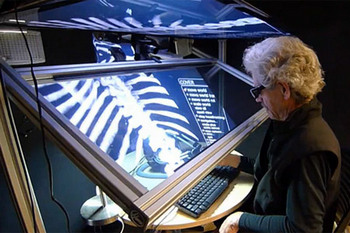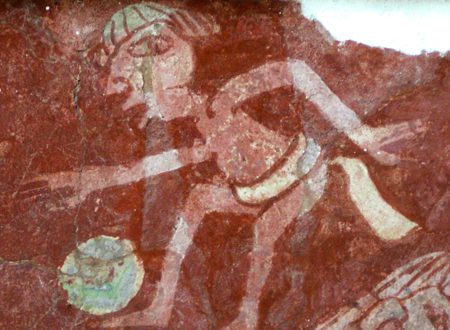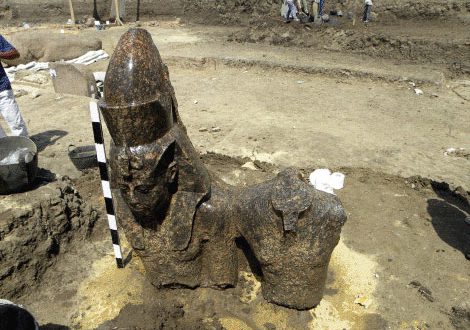 Archaeologists have rediscovered the ‘lost’ tomb an ancient Egyptian priest at the Theban Necropolis in Egypt.It was announced today by Egypt’s Minister of Culture, Farouk Hosny, that the team excavating and conservating the tomb has now cleared the burial shaft of tomb and reached its burial chamber.
Archaeologists have rediscovered the ‘lost’ tomb an ancient Egyptian priest at the Theban Necropolis in Egypt.It was announced today by Egypt’s Minister of Culture, Farouk Hosny, that the team excavating and conservating the tomb has now cleared the burial shaft of tomb and reached its burial chamber.
The tomb is located at Qurnet Murai, south Assasif, on the west bank of the Nile opposite to Luxor, and belonged to a priest named Karakhamun. It dates to the 25th Dynasty (the Reign of Shabaqo, circa 700BC) and is referenced as TT223 (Theban Tomb 223). The el-Assasif area is a well known archaeological site, containing nobles tombs from the New Kingdom, as well as the 25-26th Dynasties.
Dr Zahi Hawass, Secretary General of the Supreme Council of Antiquities (SCA), said that the team discovered the burial chamber of Karakhamun at the bottom of an 8m deep burial shaft. He added it is in very good condition and contains beautifully painted scenes.
 The entrance to the chamber is decorated with an image of Karakhamun and the ceiling is decorated with several astrological scenes, including a depiction of the sky goddess, Nut.
The entrance to the chamber is decorated with an image of Karakhamun and the ceiling is decorated with several astrological scenes, including a depiction of the sky goddess, Nut.
Ancient Egyptian Priest Karkhamun
Not much is known about Karakhamun. There is no information about his family, and he himself did not seem to have any important administrative positions. His priestly title, First ‘k Priest, does not signify any particular importance.
Yet Karkhamun’s tomb consists of two spacious pillared halls and a five-room burial chamber, and isthe largest tomb excavated at the South Assasif Necropolis so far. This suggests he had close connections to the royal court or family.
As we know only little about his life, the tomb’s dating to the 25th Dynasty or Nubian dynasty, when Egypt ‘s rulers originated from the Kingdom of Kush is based largely on the priest’s Nubian name.
The tomb’s architectural features as far as they are known also confirm this date. Karkhamun’s serpentine shabti is of a Nubian type with facialeatures that suggest a pre-Taharqo date, probably Shabaqo, writes the South Asasif Conservation Project (ACP) on its website.
TT223 Discovered Thrice
After its initial discovery in the 1820s by Wilkinson, Hey and Burton and again in the 1940s by Lepsius the tomb of priest Karkhamun at Assasif was left open and unprotected. It was photographed in the 1970s by Eigner. Some time after Eigner’s visit,its ceiling collapsed and the tomb became buried once more by the sand.
It was considered ‘lost’ until in 2001 archaeologists started exavating what was a mere crack in the sand,and foundwall carvings with a life-size figure of Karkhamun in front of an offering table.
In 2006, an Egyptian-American team lead by Dr. Elena Pischikova started carrying out conservation works at the tomb as part of the ACP.
Because of the exceptional preservation of colour of the wall paintings, and the quality of the scenes, Dr Pischikova believes the tomb of Karakhamun could be one of the most beautiful tombs from Dynasty 25.




